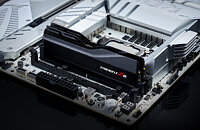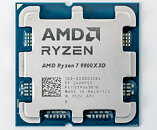
G.SKILL and ASUS Achieve New DDR5 Memory Frequency Overclock World Record at DDR5-12772
G.SKILL International Enterprise Co., Ltd., the world's leading brand of performance overclock memory, is thrilled to announce that renowned overclocker, Seby, has broken the overclocking world record for DDR5 memory frequency speed at a blistering DDR5-12772. This incredible frequency record was achieved with G.SKILL Trident Z5 DDR5 memory, built with high-performance SK hynix DDR5 ICs, running on the ASUS ROG Maximus Z890 Apex motherboard and Intel Core Ultra 9 285K desktop processor under extreme liquid nitrogen (LN2) cooling.
Reaching a New Height of DDR5 Memory Overclock Speed
This new milestone follows a long-standing legacy of record-breaking performance of G.SKILL Trident Z5 DDR5 memory, achieved by a single module from the F5-8000J3848F24GX2-TZ5K model, and highlights the exceptional overclocking capability of both the ASUS ROG Maximus Z890 APEX motherboard and the Intel Core Ultra 9 285K desktop processor. The overclock record has been submitted to and validated by HWBOT and CPU-Z; refer to the following links and screenshot to see the record submission:
Reaching a New Height of DDR5 Memory Overclock Speed
This new milestone follows a long-standing legacy of record-breaking performance of G.SKILL Trident Z5 DDR5 memory, achieved by a single module from the F5-8000J3848F24GX2-TZ5K model, and highlights the exceptional overclocking capability of both the ASUS ROG Maximus Z890 APEX motherboard and the Intel Core Ultra 9 285K desktop processor. The overclock record has been submitted to and validated by HWBOT and CPU-Z; refer to the following links and screenshot to see the record submission:



































































